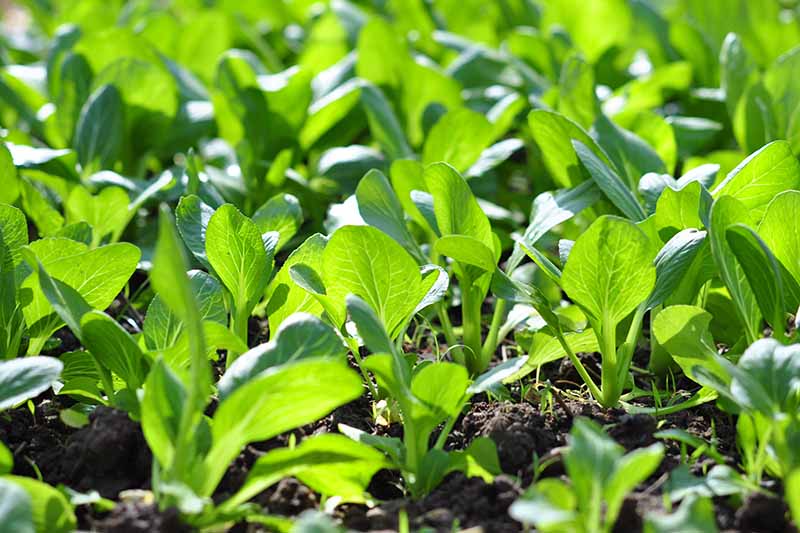In the changing times, agriculture is becoming an important means of earning for people. In this sector, farmers are now earning more profit at less cost by planting different types of expensive commercial crops according to market requirements. Now in the agriculture sector, farmers are focusing on the cultivation of vegetables along with traditional crops. With the passage of time, farmers are cultivating new profitable and costly vegetable crops leaving conventional vegetable crops in the cultivation of vegetables. Therefore, we are telling you about such a foreign vegetable crop, which can be grown in less time and also gives profit to the farmers. This crop is Bok Choy and it is a vegetable crop. Bok Choy farming is profitable and this crop is also called Chinese cabbage. Bok choy is a type of vegetable that looks like cabbage.
Like cabbage, bok choy also comes from the cruciferous vegetable family. Moreover, it has long leaves and is rich in nutrients. Bok choy is also rich in fibre, vitamins, minerals, and antioxidants and is low in calories and carbohydrates. It helps in increasing the immunity of the body. Due to this, its demand is growing in India. In this context, Bok Choy Farming can prove beneficial for the farmers.
How To Do Bok Choy Farming?
This nutrient-rich bok choy crop tolerates full sun but does well in partial shade. To plant its crop well, a place with partial shade is required. Its plants need sunlight for 4 to 5 hours a day. Its development depends on sunlight. Shorter days promote vegetative growth, and longer days stimulate flowering, which leads to the development of the bok choy seed crop. Its seeds are kept in pods which can be obtained when they are brown and dry. Its seeds are stored in a cool and dry place till then. Then, they are taken out at the time of sowing from a cool and dry place.
Suitable Soil For Bok Choy Farming
Bok choy is a cool-season vegetable crop. A temperature between 13 to 21 degrees is considered suitable for growing its crop. Temperature above 23 degrees can damage crops. Bok choy farming can be practised well in cooler climates. It is not as winter hardy as some other leafy Asian greens and produces quickly for spring seed. Bok choy grows best in light, fertile, well-drained soil. Therefore, for its cultivation, soil containing good organic matter is required. The soil pH value for Bok Choy farming should be between 6.0 to 7.5. Its cultivation requires a lot of water. According to agricultural experts, sandy loam soil with high organic matter content is suitable for bok choy farming.
Planting In Bok Choy Farming
Bok choy is an early-maturing vegetable crop with high humidity. It is planted from seed, which is sown every two weeks before the onset of summer with the help of a Massey Ferguson Tractor 1035. While preparing the field 2 to 3 weeks before sowing its seeds, manure from poultry manure should be given at the rate of 0,5 kg/sq. Moreover half a dose of Nitrogen is provided at the time of planting. And a full amount of phosphate and potash fertilizers should be given before or during planting in Bok Choy farming. Its sowing depth should be kept at 0.6 to 1,2 cm in the open field.
Moreover, the distance between plants to plants in rows should be 15 to 30 cm, and the distance between rows should be kept at 30 to 45 cm. To obtain a smaller bok-choy crop, the spacing is kept shorter. You can also purchase nursery seedlings to plant in a nursery after the danger of snow has passed.
Planting Bok Choy At Home
To grow the Bok Choy plant at home, you can take a pot or grow-bag with drainage holes of at least 9 inches in length and width. You can also buy the best-size grow bags online for growing Bok Choy green leafy vegetables at home.
Bok Choy Harvesting
Bok choy grown for continuous consumption is ready to harvest 6 to 8 weeks after sowing. The leaves of the bok choy crop are cut at 10 to 15 height. Its small varieties are 6 inches tall, and the large varieties grow up to 2 feet. Planting bok choy in late summer allows you to get a second crop in empty beds that get sun for most of the day. In addition, Bok Choy farming crops produce more delicious greens in cold weather. A light frost improves the flavour of the leaves. Moreover, we can get crops about one month after sowing with the help of a Mahindra 475 tractor. In the future, a new batch of seeds can be planted every two weeks, providing the family with a continuous batch of greens.
Storing Bok Choy Yield
After harvesting the Bok Choy crop, you can store it for 3 to 4 weeks at zero temperature and 100 percent humidity. Bok choy seedlings can be stored in polyethene for up to seven days.
Stay tuned with us for more details about profitable farming trends in India.


